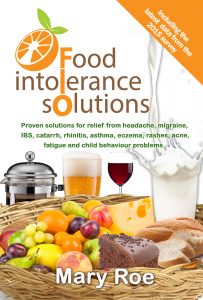
Irritable bowel syndrome is hardly a diagnosis! It just means the bowel is irritated by something, and it is a syndrome which is not fully understood.
There are many possibilities for what irritates the bowel, but the top suspect has got to be food or drink.
You will almost certainly have tried to work out what your problem foods are and because of symptoms suffered after certain meals, you may have decided that all kinds of things, maybe vegetables, fizzy drinks, red meat, rich meals, fibrous meals and acidic foods are aggravating your tummy.
Frequent consumption of a staple food or drink is usually the cause, but the sufferer naturally presumes that the food most recently eaten is the cause. What happens is, the staple food upsets the gut, and after that it seems that anything the person eats is a problem, making them windy, bloated, giving them pain, reflux or indigestion. The sufferer starts to avoid anything that appears to cause their symptoms and therefore cuts out a multitude of foods from his diet. His daily menu becomes unhealthy, often bland and boring, and he can end up building new intolerances.
The Table below details the most common food intolerances of the 232 adults and 61 children who suffered from tummy symptoms, from my 2015 Survey, which included 345 adults and 96 children.
| Food |
Adults |
Children |
| Milk |
37% |
82% |
| Cocoa |
41% |
46% |
| Coffee |
33% |
|
| Orange |
31% |
50% |
| Yeast cheese yogurt |
38% |
|
| Tea |
29% |
|
| Some form of alcohol |
11% |
|
| Sweet artificial flavours |
15% |
20% |
| Apple |
11% |
31% |
| Monosodium Glutamate |
9% |
10% |
| E150 |
14% |
7% |
| Aspartame |
3% |
11% |
| Soya |
3% |
10% |
| Sunflower |
7% |
5% |
| Wheat |
> 1% |
|
Case Studies
I met Pamela when she was 71, and she had already been suffering from bowel symptoms for 11 years. Like many people, Pam had tried changes to her diet in order to alleviate symptoms. She was suffering intermittent diarrhoea, loose stools and constipation. She was bloated most days, and suffered moderate to severe tummy pains at least three times a week.
Four years before I met Pam, a colonoscopy and blood tests had revealed nothing abnormal,and she had therefore been given a diagnosis of irritable bowel syndrome.
Following hospital advice at this time she also stopped drinking fizzy drinks and spicy food. She had been on a wheat and gluten free diet for 2 years. She avoided onions in any form. All vegetables gave her symptoms, so she rarely ate them.
She was very suspicious of fruits, so did not eat much of that food group. At one stage, before colonoscopy refuted the diagnosis, it had been suggested that she might have diverticulitis, so following some internet research, she had made sure that she never ate any pips or seeds [she would sieve tomatoes to remove the seeds.]
She had started using lactofree foods, in case lactose intolerance was part of her problem. To make things more complicated, Pam was a strict vegetarian. She did eat fish very occasionally but she really did not like eggs. As a consequence of all these changes her diet was pretty bland, and not very healthy at all. Despite massive changes to her diet, she had seen only minimal improvements symptomatically.
At the beginning of the testing procedure, I explained to her that, because there were so many foods toat she had not eaten for so long, I might have to do a second session of testing a few days later, when she had eaten all of her problem foods. She was very uneasy about this, as she really did not want to risk the bad symptoms that vegetables, for example, tended to provoke. I explained that it was very common for IBS sufferers to suffer symptoms from vegetables and fruit, and that, when the underlying food cause [eg milk, yeast, tea, coffee etc] was avoided, then the vegetables, fruit, fizzy drinks, spices etc would not affect their gut. I also explained about the study that I had done in 2011, when I found that peoples’ perceptions of which foods they reacted to were only 17% accurate.
Eventually we compromised, and she decided she would strictly avoid the foods that I suggested for a week to ten days, and then when she was asymptomatic, she would introduce the foods that she suspected were bad for her. If she wished, at that stage, I could test her a second time to confirm.
On initial testing I found that Pam was intolerant of yeast, all cheeses, all yogurts, hemp / linseeds
The gluten free bread that she had been using contained yeast. Many of her specialist vegetarian products [eg quorn, smoked tofu] contained yeast, as did the breaded cod that she ate twice a week. On top of that the slimmer’s vegetable soup that she used for lunch onmany days of the week contained yeast as a savoury flavour. She ate cheese daily. She ate yogurt twice daily. She put powdered hemp [linseeds] on cereal, and salads at least twice daily, to ensure that she had more protein. So all her problem foods were those that she ate several times daily
These were the underlying cause of her symptoms, and the vegetables that she strongly suspected were actually ‘red herrings’.
Pam and I tried to work out how, without cheese and the powdered hemp, she could have enough protein in her diet, and she decided that she would eat nuts, of as many different varieties as possible. After 10 days she started trying out vegetables again, and found she could tolerrate all of them without adverse symptoms. Happy days!
Jodie a 28 year old beauty salon owner, came to me for a Food Intolerance test following a recommendation from a friend. Her main problems were tummy related, but she had some other symptoms which could have been linked to food intolerance. She complained of daily bloating. This bloating was extremely uncomfortable because her tummy swelled to such an extent on some days she looked six months pregnant. Flatulence was a major problem for Jodie, particularly later in the day. Her stools were always loose and occasionally she suffered diarrhoea. When she had diarrhoea, it was preceded by pain, and associated with a very urgent need to get to the toilet. Jodie had seen her GP several times during the previous ten years. Eight years previously she had been referred for a colonoscopy, but nothing abnormal was discovered. Consequently, she had been diagnosed as suffering from irritable bowel syndrome. The other symptoms that Jodie presented with were fatigue, lethargy and joint pains in her fingers, wrists and elbows.
Jodie was suspicious of wheat, because the bloating started after lunch. She usually ate a sandwich or a wrap at lunchtime. Her diet contained very few vegetables, because she thought they were a trigger. Her GP had advised her to avoid vegetables, fizzy drinks and anything that seemed to make her more windy. I explained often with tummy issues, the person perceives that certain foods such as vegetables, spices, a rich meal, a fatty meal or a big meal can affect them, but once the underlying problem food has been excluded from the daily diet, the person can cope with the foods about which he had suspicions.
So we got down to her testing and discovered that Jodie was intolerant of
- dark brown food colouring E150 –E155
Jodie used cow’s milk on cereal every morning, in two cups of tea and two cups of coffee daily. She ate cheese most days, and ate at least one yogurt a day. I explained to Jodie that people become intolerant of foods they tend to eat or drink most frequently. She quickly realised that cow’s milk products were the food group that she consumed more often than any other food or drink, on average 7 – 8 times daily. Dark brown food colour is in cola drinks, gravy and stock cubes mainly. Jodie had noticed that she felt even worse after a roast dinner, but thought it was because it was a large meal, or because the vegetables had made her windy. When she felt worse after a diet coke, she presumed that it was because of the bubbles.
| Why these foods? |
Cause |
| Cow’s milk products |
Frequency of use |
| Why then? |
Trigger |
| Started the pill aged 20 [symptoms started] |
Hormonal trigger |
| Recent work stress [symptoms worsened] |
Stress trigger |
Jodie agreed to avoid these foods, and after a week she was feeling much better. She suffered a few headaches in the first few days because of withdrawal symptoms, but her tummy settled down. She had much more energy and was no longer lethargic. Her joint pains completely disappeared. The only hiccough she encountered was when she ate goat’s cheese. Her tummy became very bloated again. She assumed, following an email conversation with me, that she could not tolerate any animal milks, cheeses or yogurts. After three months exclusion, Jodie gradually reintroduced her problem foods. Now she eats cow’s milk products again, but tries not to have them more than twice a day. She has learned to enjoy her coffee black, and uses almond milk in her tea and coconut milk on her cereal. When Jodie introduced E150 [caramel] in the form of coca cola again, she felt bloated within four hours and was back to feeling unaccountably tired. Instead she has lemonade if she wants to have a fizzy drink. She has learned to make her own gravy using marmite instead of gravy granules.

The post APRIL IS IBS AWARENESS MONTH! appeared first on Food Intolerance Solutions.

